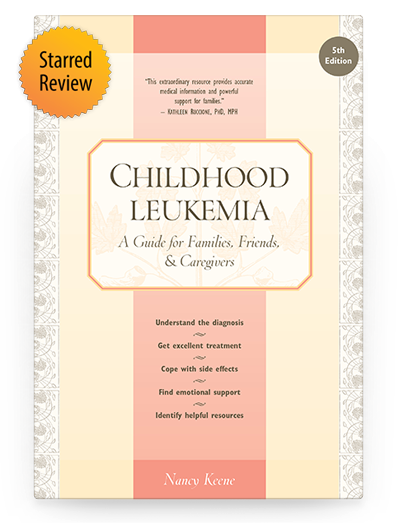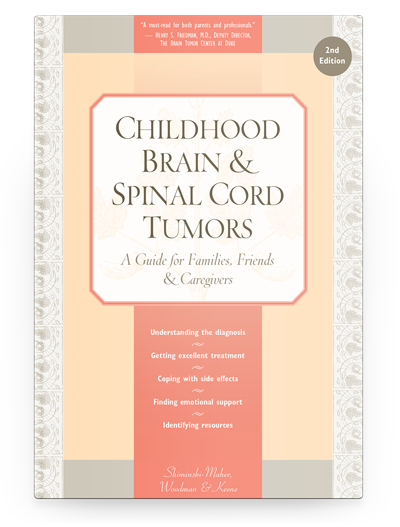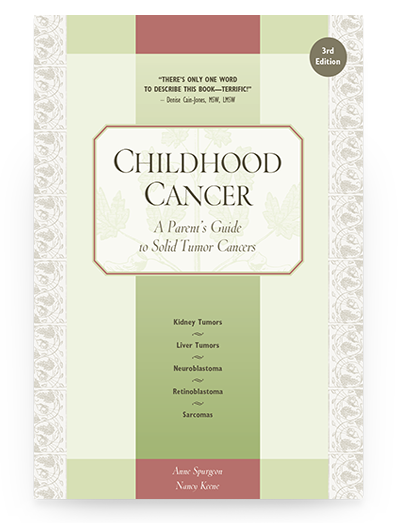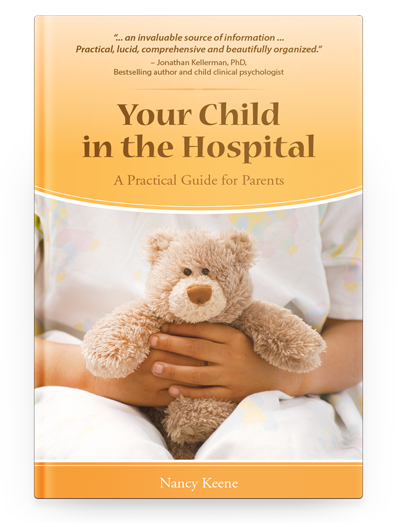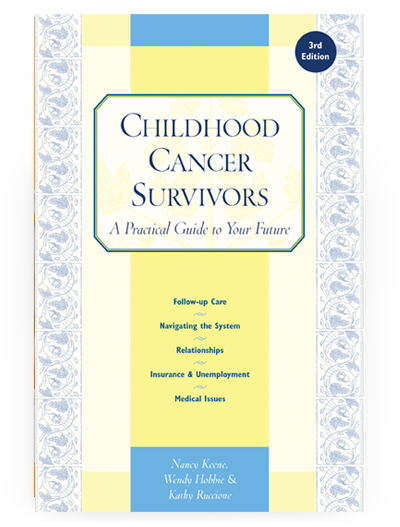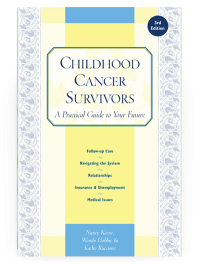
Childhood Cancer Survivors
Childhood Cancer Survivors
A Practical Guide to Your Future, 3rd ed.
By Nancy Keene, Wendy Hobbie, Kathy Ruccione
Copyright 2012
More than 420,000 children, teens, and adults in the United States are survivors of childhood cancer. The surgery, radiation, chemotherapy, and stem cell transplants used to cure children can affect growing bodies and developing minds. If survivors know of these potential problems, they can take steps to identify, cope with, or treat them early if they do develop. Childhood Cancer Survivors charts the territory for survivors by providing helpful information about:
- Medical late effects
- Emotions
- Follow-up care
- Staying healthy
- Jobs and insurance
Woven throughout the text are true stories—practical, poignant, moving, funny—from more than 100 survivors of childhood cancer.
Table of Contents
All Guides- 1. Survivorship
- 2. Emotions
- 3. Relationships
- 4. Navigating the System
- 5. Staying Healthy
- 6. Diseases
- 7. Fatigue
- 8. Brain and Nerves
- 9. Hormone-Producing Glands
- 10. Eyes and Ears
- 11. Head and Neck
- 12. Heart and Blood Vessels
- 13. Lungs
- 14. Kidneys, Bladder, and Genitals
- 15. Liver, Stomach, and Intestines
- 16. Immune System
- 17. Muscles and Bones
- 18. Skin, Breasts, and Hair
- 19. Second Cancers
- 20. Homage
- Appendix A. Survivor Sketches
- Appendix B. Resources
- Appendix C. References
- Appendix D. About the Authors
- Appendix E. Childhood Cancer Guides (TM)
How to Use this Book
While conducting research for this book, we were repeatedly told by parents to “write the truth.” Because the “truth” varies for each person, more than 100 parents, children with brain or spinal cord tumors, and their siblings share portions of their experiences. This book is full of these snapshots in time, some of which may be hard to read, especially by families of newly diagnosed children. Here are our suggestions for a positive way to use the information contained in this book:
Consider reading only the sections that apply to the present or the immediate future. Even if your child’s prognosis indicates a high probability of a cure, reading about recurrence or bereavement can be emotionally difficult.
Realize that only a fraction of the problems that parents describe will affect your child. Every child is different; every child sails smoothly through some portions of treatment but encounters difficulties during others. The more you understand the variability of cancer experiences, the better you will be able to cope with your own situation, as well as be a good listener and helpful friend to other families you meet with differing diagnoses and circumstances.
Take any concerns or questions that arise to your pediatric oncologist and/or nurse practitioner for answers. The more you learn, the better you can advocate for your child.
Share this book with family and friends. Usually, they want to help, but don't know what to do. The childhood cancer-specific guides not only explains the disease and treatment but also offers dozens of concrete suggestions for family and friends.
If you want to delve into any topic in greater depth, Appendix C, Books and Websites, is a good place to start. It contains a list of reputable websites and an extensive list of books for parents and children of all ages. Your taste in reading materials is very individualized, so if something suggested in the appendix is not helpful or upsets you, feel free to try another resource.

